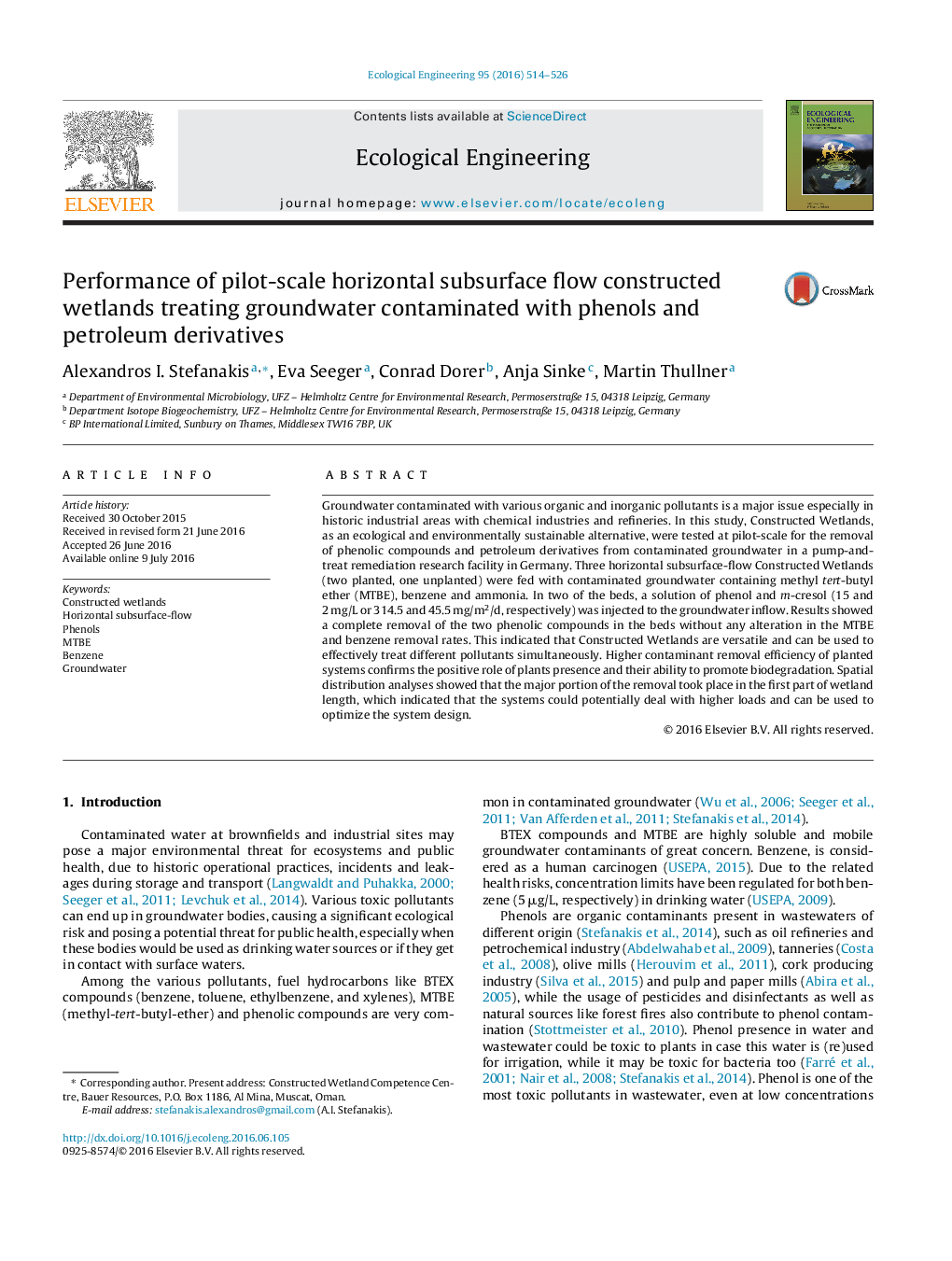| کد مقاله | کد نشریه | سال انتشار | مقاله انگلیسی | نسخه تمام متن |
|---|---|---|---|---|
| 4388479 | 1618004 | 2016 | 13 صفحه PDF | دانلود رایگان |
• Constructed Wetlands can be effectively used for onsite phenols removal from contaminated groundwater.
• Presence of phenols does not affect MTBE and benzene removal.
• Planted wetlands perform better than unplanted systems.
• High removal rates at the wetland area near the inflow point.
• Biodegradation appears to be the major removal mechanism.
Groundwater contaminated with various organic and inorganic pollutants is a major issue especially in historic industrial areas with chemical industries and refineries. In this study, Constructed Wetlands, as an ecological and environmentally sustainable alternative, were tested at pilot-scale for the removal of phenolic compounds and petroleum derivatives from contaminated groundwater in a pump-and-treat remediation research facility in Germany. Three horizontal subsurface-flow Constructed Wetlands (two planted, one unplanted) were fed with contaminated groundwater containing methyl tert-butyl ether (MTBE), benzene and ammonia. In two of the beds, a solution of phenol and m-cresol (15 and 2 mg/L or 314.5 and 45.5 mg/m2/d, respectively) was injected to the groundwater inflow. Results showed a complete removal of the two phenolic compounds in the beds without any alteration in the MTBE and benzene removal rates. This indicated that Constructed Wetlands are versatile and can be used to effectively treat different pollutants simultaneously. Higher contaminant removal efficiency of planted systems confirms the positive role of plants presence and their ability to promote biodegradation. Spatial distribution analyses showed that the major portion of the removal took place in the first part of wetland length, which indicated that the systems could potentially deal with higher loads and can be used to optimize the system design.
Journal: Ecological Engineering - Volume 95, October 2016, Pages 514–526
